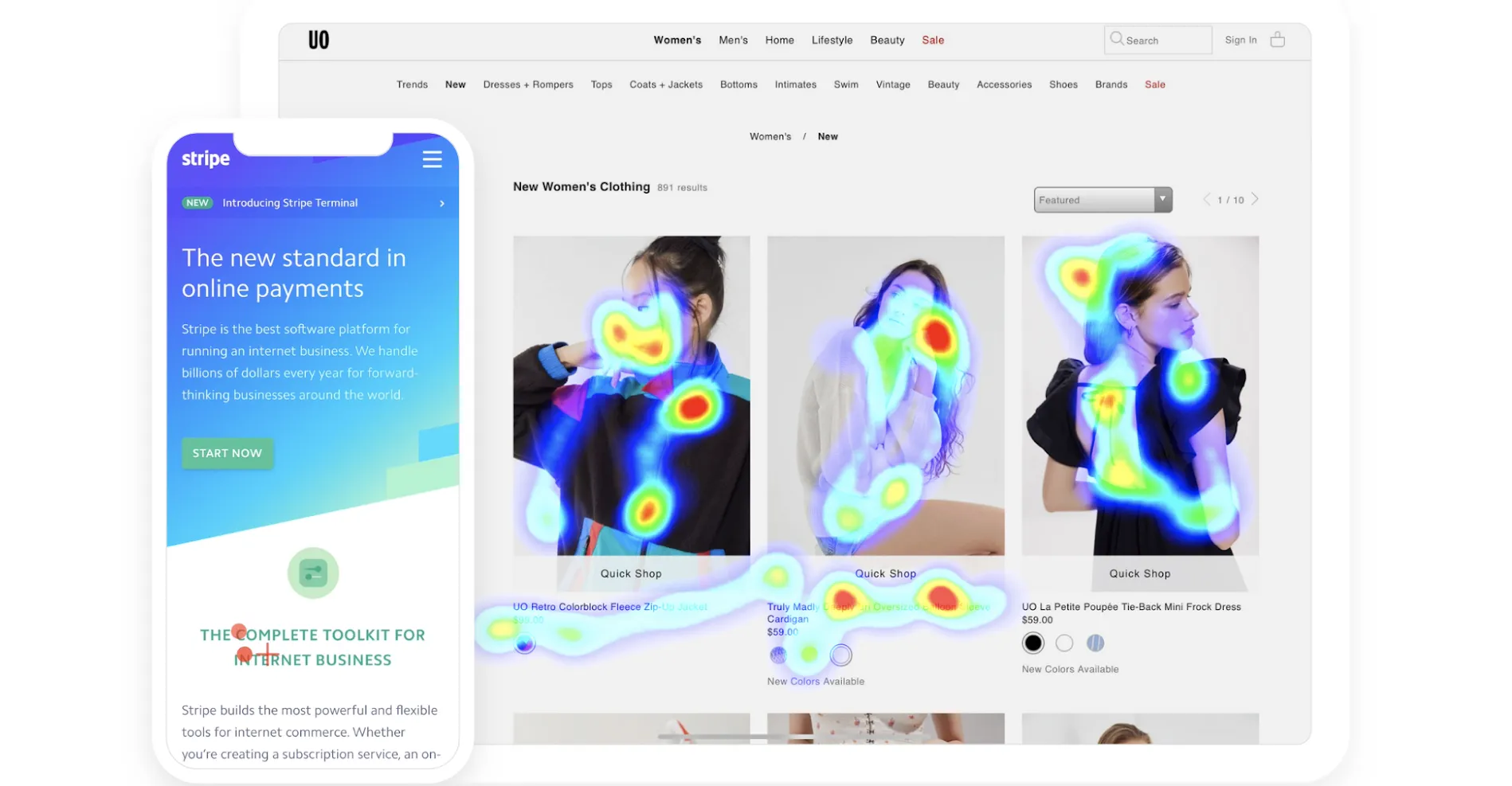· Thomas · ux-research · 13 min read
Doctolib - Health checkup
This story take place in 2018, a time where nobody ever heard of "Covid 19" and were Doctolib was a young and promishing Start-up. This is the synthesis of several user tests conducted independently of this company, which has pretty well stood the test of years.

If making a doctor’s appointment in the middle of the night, in less than 10 minutes, without having to call seems as unlikely as it is desirable, we have good news. It’s been perfectly possible for several years now, and could soon become the norm.
Doctolib pass the Health checkup
Since 2007, online appointment-scheduling websites have been promising to facilitate a patient-doctor relationship long confined to the telephone. For a lower cost, the services on offer can replace those of a medical secretary: online medical diary management, remote medical secretarial services and so on. Coupled with the promise of making yourself known to patients and reducing the number of missed appointments, it’s hardly surprising that this kind of service is catching on. The American company ZocDoc, the first to offer this type of service, has some 600 employees and is a fine example of success. Firmly established in the United States, the site is even a model for start-up Doctolib. While the Indian Practo secures the top spot in Asia, France’s Doctolib aims to carve out a place for itself in Europe. Present since 2013, the site is no longer a newcomer, yet it continues to grow at an exponential rate. After establishing a foothold in Germany and signing a major partnership contract with the AP-HP (managing authority for most hospital in Paris area), the company, which currently employs 300 people, is looking to add 150 more in the near future. The goal seems possible, since in January 2017, the start-up just completed a new fundraising round of 26 million euros, confirming its excellent health and the realism of its European ambitions. At Testapic, we wanted to put the services offered by Doctolib under the microscope of user testing. From February 15 to 17, we asked 22 of our testers to discover the site by carrying out routine tasks such as booking appointments. As health is a sensitive area, and one that concerns everyone, we wanted to check whether Doctolib’s services were easy to use, even for elderly users. To do this, we set up two groups of 11 testers. One group was made up of Internet users aged between 20 and 35, while the other group was made up of users aged between 60 and 78. We also wanted to find out how much confidence users had in the site. The aim was to find out whether, beyond browsing comfort, our testers could envisage adopting the platform for their own needs.
We approached this test with 3 questions in mind
Is this site easy to use? What are the strengths and weaknesses of the navigation?
Do users understand how the service works? Do they find it useful?
Healthcare is a particularly sensitive and confidential field. Do users see this as an obstacle to adopting the service?
First Contact
Homepage – welcoming and functional
The design of the home page is rather uncluttered, with round illustrations, and is judged to be quite pleasant by the testers. The service is summarized by an explicit sentence above a large search bar: “Book an appointment online with a doctor or dentist - it’s immediate, simple and free”. Additional options such as “Account access”, “Need help” and “Practitioner access” are discreetly displayed in the top right-hand corner.
In this configuration, the affordance of the search bar is fully functional. Many users spontaneously carry out their first search on the site, while help is hardly ever consulted. The lower section is a little “cluttered”, as some users have complained. It is nevertheless functional, since essential information such as the “Terms and Conditions” or “Privacy” pages are always found in a minimum of time. The only problem is returning to this page from another page on the site. This difficulty mainly concerns older users, although they are not the only ones.

An explicit pictogram next to the “Doctolib” label could help users find their way around.
In conclusion, this page seems to serve its purpose perfectly: it reassures users and directs them to the search engine.
The Search Engine, a laborious yet necessary step
It’s at this stage that the first difficulties arise. Like most of its competitors, Doctolib offers a search engine with 3 input fields. The search can therefore be carried out either by name (of doctor or establishment), or by medical specialty. In both cases, the geographical area must be specified in addition. This geographical field poses no navigation difficulties, but don’t look for a doctor in Occitanie or Haut-de-France: the new regions are not yet taken into account. The good surprise is that this field accepts searches based on a zip code, a function you can’t guess until you’ve tried it. The central field, allowing searches by “Specialty”, works relatively well, thanks in particular to its list of suggestions. As a result, users will perform the vast majority of their searches from this field.
The “Doctor’s name, subject area” field is the real weak point of this search bar, if not the site. Firstly, the suggestions are far less relevant, and in particular do not take into account the geographical criteria entered in the “Where? (address, town)” field. For example, if a user is located in the city of Nantes and is looking for a clinic there, the first two suggestions will be in Paris and Marseille. On the other hand, this field has the bad habit of deleting the text entered after each search. This means that users who wish to obtain more results by changing the geographical area will have to enter the name of the desired doctor a second time. Another reason why searches are rarely successful in this way is that the number of doctors and, above all, establishments affiliated to Doctolib is still limited. With 7,000 practitioners registered on the site out of the 259,000+ doctors and dentists practicing in France, the likelihood of finding your regular doctor is still low. This “specialist/establishment” search is therefore probably more useful for regular users of the site wishing to find doctors they have already consulted via Doctolib than for new users, as is the case for most of the testers who took part in this user test. Finally, sometimes the “OR” between the two search fields goes unnoticed. And once the 3 fields have been completed, the search result is usually a frustrating blank page.
Overall, this search format, halfway between the form and the single field, remains a source of much user dissatisfaction..

Merging the first two, or replacing the 3 fields with a single input field accepting queries such as “Dentist Metz” would probably reduce the time spent by the user. Then improve results sorting with an additional filter on the list page.

A zip code in the placeholder could indicate to users that this type of search is possible.
Finally, after each search that returns few results in a given geographical area, the search bar could feature a “Widen search” button. This would save users the trouble of retyping their search.
A booking process that users love
List pages: information and controls
Once the pitfalls of the search engine have been overcome, user satisfaction is generally high. To the left of a map, proposals are displayed in blocks. Each block includes a photo, some information about the practitioner and, above all, a calendar of his or her availability. The design is well received, and complaints are much rarer than at the previous stage. The majority of criticisms relate to the low number of proposed results, a problem inherited from a restrictive search engine, particularly on the geographical criterion.
If the search engine doesn’t find results for a given geographical area, systematically suggest similar practitioners practicing in a wider radius.
The low number of results is all the more unfortunate given that the list page features 3 particularly effective search filters. These filters could do with a little more visibility, as in addition to being elegant, the criteria they propose are adapted to the doctor’s specialty (such as reasons for consultation). A detail appreciated by users when they detect it.
Filters are not always detected, so it might be useful to increase their visibility. This could be done either by accentuating their contrast and font, or by linking them more closely to the search engine.
However, there are two recurring user suggestions concerning fees, where the vocabulary (conventionné secteur 1, secteur 2) is not always self-explanatory. This explanation is available at the bottom of the page, but is rarely consulted.
On the subject of fees, many users would like the price of a consultation to be visible directly from the listing page. Others are calling for an explanation of the vocabulary used to describe fees (in the form of explanatory banners).
Finally, the search engine suggests specialties that do not correspond to the diplomas issued in France. Starting from the disorder to be treated is not in itself a bad idea, but the results can be confusing. In this test, we asked testers to search for a sleep doctor. Although the practitioners proposed seemed to have a specialization in this field, the heterogeneity of the types of specialist (ENT, pneumologists) surprised more than one tester.
In the case of research outside recognized specialties, please indicate on the list page that the proposals correspond to practitioners who have particular expertise in the subject soughts

All in all, the page is a success. Quite visual, with maps and photos, it offers users controls for choosing a slot and moving straight on to booking an appointment. The information provided is clear, the design impressive, and users end up clicking on the first available practitioner!
Doctor files: attention to the detail
Practitioner profiles also have a positive effect on visitors. They are greeted by photos, a short description of the doctor and essential information for the visit (payment methods accepted, address). Moving down to the middle of the page, visitors are presented with an appointment booking form. The form is sufficiently clear and attractive for users to stop and start filling it in before glancing at the footer.
The information at the bottom of the page is less essential, but well worth the detour. The doctor’s itinerary is detailed, with access information and a map, as well as the languages spoken by the doctor… The information is precise and presented with such care that it convinces users of the seriousness of the platform. The detail page is designed to direct users to the registration form, although several users have pointed out that this footer could be made more visible.
An incentive to scroll down below the questionnaire, or by moving information up from the bottom of the page. Some users also offer the option of enlarging photos of the practitioner with a simple mouse-over.
The appointment booking funnel
The rest of the navigation is a long, quiet river: booking an appointment, creating an account. These short, easy-to-read forms nevertheless offer some interesting functionalities. When booking a hospital appointment, dynamic fields allow you to choose the doctor or the reason for consultation. The result: none of our 22 testers reported the slightest difficulty in booking an appointment.
This appointment booking then leads to the account opening form to finalize the operation. The form, too, follows the same standards of simplicity. A telephone number, an e-mail address and a password are all that’s needed to complete this step. We didn’t ask users to create an account, but they did, and unanimously agreed that the use of the telephone number is useful and justified (especially for reminders).
In the registration form, some fields are mandatory without being indicated. It would be preferable to mark them with an asterisk.

At the account creation stage, a breadcrumb trail appears above the form. This is not necessarily essential for guidance. On the contrary, it may mislead some users who wish to return to the home page by clicking on it (which doesn’t work). In this situation, the breadcrumb trail should be made clickable.
A solid capital of trust
One of the reasons why Doctolib is so easy to navigate may lie in the ease with which users understand the site itself. Right from the home page, users are able to grasp the broad outlines of how the site works. Without necessarily knowing that there is a remote telephone switchboard system, most users understand that they can book a doctor, and that the information on the site comes from an agreement between Doctolib and the various practitioners. This correct interpretation of the site avoids confusion with a directory service, such as Pagesjaunes.
Once the service (booking an appointment) has been properly understood, the site’s information is perceived as an added value and a guarantee of seriousness. Reassurance elements (pop-ups, or appointment reminders) are welcomed.
On a subject as sensitive as health, we wanted to find out whether confidence in the service could be an obstacle to using the site. We tried to assess the level of trust at different stages of the test protocol. Our feedback shows that confidence is very high. On a very positive note, almost all users seemed to increase their confidence and satisfaction with the site as they navigated through the site (particularly when browsing the list and detail pages).
Concerning the T&Cs and data usage, there are 2 different pages on the site. One is an official legal text and the second, called “Privacy”, summarizes a data use policy that seems quite protective of users.
Users of this crowdtest had no difficulty in finding either of these pages, but while the “Confidentiality” page fully reassures users, those who find the “Personal data protection policy” page are bound to be a little intimidated by the length and austerity of the legal text.
By highlighting this summary page, Doctolib could certainly reassure some curious onlookers seeking information about the site’s business model.
Doctolib: a successful bet?
Simplicity, understanding, confidence in the service: after analyzing the browsing experience of our various testers, we can see that the Doctolib site responds favorably to the questions we had about it. User criticism of the search engine’s perfectibility should not detract from the overall positive feedback. The design is highly praised, and the functionalities are all deemed useful.
What’s more, it’s clear that the site is accessible to a very wide audience. With an average age of 32 and 62, our groups of testers were separated by 30 years. In the end, we found no differences in terms of navigation or perception. Comments and assessments were similar in both groups, and none of the testers seemed to have encountered any age-specific difficulties. In this respect, Doctolib has succeeded in its aim: to offer a modern service that leaves no user behind.
But Doctolib’s greatest asset is certainly that users find the service useful for themselves and their loved ones. As a result, in addition to its undeniable success in terms of design, it enjoys particular interest. After a pleasant browsing experience, users are willing to open an account, many spontaneously say they’d like to tell others about the service, and some would even like to enter more information if it would give them access to new features.
In short, Doctolib is an accomplished site that meets a real need for users. Despite a search system that can still be perfected, navigation is fluid and the whole site is pleasant to use. Doctolib is well on its way to winning the hearts of patients. And that’s saying a lot. We wish Doctolib the best of luck as it continues to expand among practitioners.
An article written during my time in Testapic.
Thomas

